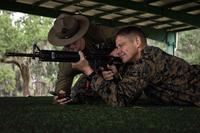Despite Pentagon opposition to its increasing market dominance, Lockheed Martin Corp. is set to come out a winner no matter which way the U.S. Army goes in eventually awarding multi-billion contracts to replace its helicopter fleets.
Last month, the world's largest defense contractor won tentative approval from the Justice Department for the $9 billion purchase of Sikorsky Aircraft Corp., one of the final two competitors for a precursor to the Army's Future Vertical Lift (FVL) fleet of aircraft.
Lockheed was already a main partner with Textron Co.'s Bell Helicopter in the competition against Sikorsky. Both Bell and Sikorsky were to produce Joint Multi-Role (JMR) technology demonstrators for the Army to choose from by September 2017.
Under the current plan, the initial JMR will set the standard for the building and testing of a series of next-generation operational aircraft for the Army, Navy, Air Force and Marine Corps by 2030-2035.
Reacting to the Lockheed takeover of Sikorsky, Frank Kendall, the Pentagon's undersecretary for acquisition, technology and logistics, said last month that the deal "gives rise to significant policy concerns."
He said the Defense Department would ask Congress to "explore additional legal tools and policy" to guarantee the diversity of the defense industrial base.
Kendall called the Lockheed-Sikorsky deal "the most significant change at the weapon system prime level since the large-scale consolidation that followed the end of the Cold War."
"This acquisition moves a high percentage of the market share for an entire line of products -- military helicopters -- into the largest defense prime contractor, a contractor that already holds a dominant position in high-performance aircraft due to the F-35 winner-take-all approach adopted over a decade ago."
In a statement, Lockheed responded, "We respectfully disagree with the general conclusion and rationale behind (Kendall's) statement on consolidation by the defense industry. There is no evidence to support the view that larger defense companies reduce competition or inhibit innovation."
Lockheed's acquisition of Sikorsky from United Technologies Co. is expected to open new markets for the company, which has annual revenues of about $45 billion and already dwarfs its main defense firm competitors such as Northrup Grumman Corp. and General Dynamics Corp.
At the Association of the U.S. Army exposition this week, Sikorsky and Bell both had models of their aircraft on the showroom floor. Officials of both firms insisted that Lockheed’s involvement would not skew the competition.
At a news conference next to Bell's entrant in the competition -- the V-280 Valor tiltrotor aircraft -- John Garrison, president and chief executive officer, said that Lockheed, by buying Sikorsky, was "actually on both sides" of the competition.
"This is the world that we operate in," he said. "We compete on some programs, we cooperate on others."
"Lockheed will be in a great position with this (Bell's) aircraft to win that part of the competition" against Sikorsky, Garrison said. "It's not unusual for Lockheed to compete on two opposing platforms. They've done this before."
At a separate news conference, Mark Miller, Sikorsky's vice president for engineering, said he expected "zero complications" for the competition from Lockheed's acquisition of his firm. Lockheed's work with Bell "will be firewalled from this effort" to build a competing aircraft at Sikorsky, he said.
The Sikorsky entrant in partnership with Boeing -- the SB-1 Defiant -- will be based on the design of S-97 Raider, projected as an armed scout, said Bill Fell, a Sikorsky experimental test pilot who has flown the Raider prototype.
The Raider helicopter features two coaxial, or counter-rotating, main rotors and a pusher-prop on the tail to give it the required speed of at least 230 knots demanded by the Army.
"It's all about speed coupled with everything a conventional helicopter can do and more," Fell said. The pusher prop adds agility in addition to speed, he said.
"Not only does it provide you with speed but also the ability to slow down rapidly without putting the nose 30 degrees up," Fell said. The Raider can also fly backwards. "I can back away from a target and keep the nose pointed on the target. We can maneuver backward," Fell said.
Miller said the Raider was "very suitable as a technology demonstrator for our offering in the JMR medium (Joint Multi-Role medium helicopter), which we're teamed with Boeing on."
The Bell version -- the V-280 Valor tiltrotor -- was based on the technology and experience Bell gained from the MV-22 Osprey program for the Marine Corps and the Air Force.
One of the main differences between the Valor prototype and the Osprey was that the engines for the two rotors will stay stationary on the wing of the Valor. On the Osprey, the rotors and the engines rotate up for vertical flight.
"The real aircraft is well underway," Garrison said of the Valor. He also projected that Bell could make the Valor operational 6-8 years ahead of the Army's schedule. "We don't need to wait until 2035 to get capability to our warfighters," he said.
--Richard Sisk can be reached at Richard.Sisk@military.com.







